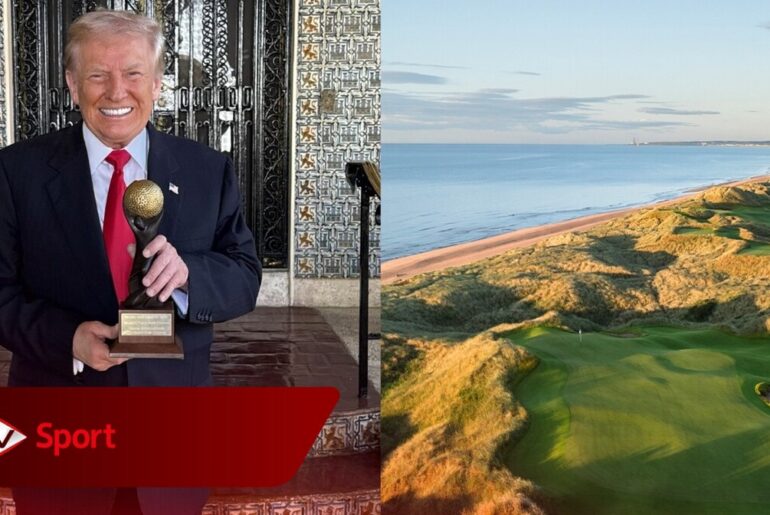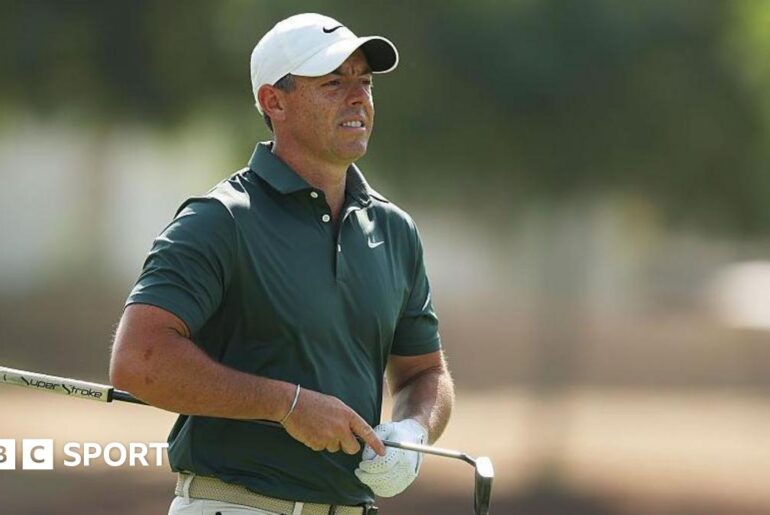Adapted from and crediting Golf Inc.’s “Most Powerful People in Golf 2025” (November/December 2025 issue).
Golf Inc.’s annual Most Powerful People in Golf list is more than an industry vanity exercise. It is a snapshot of who actually controls where we play, how clubs are run, and what the future of the game looks like from the boardroom down to the Saturday medal play.
The 2025 list highlights a key shift: power in golf is broadening. Management companies, technology platforms, architects, and media executives now share the stage with traditional governing bodies and superstars. For AmateurGolf.com readers—competitive amateurs, serious public players, and private-club members—that shift is already affecting course access, tournament venues, and the overall playing experience.
Why Golf Inc.’s List Matters to Amateur Golfers
Most of the names on Golf Inc.’s list don’t hit shots on TV every Sunday—but they influence far more rounds than any tour player. Troon, KemperSports, Invited, Arcis, Heritage, Century, and Concert Golf collectively touch hundreds of courses and millions of players. Governing bodies like the USGA and PGA of America write the rules and shape pathways for competitive amateurs. Technology and media companies decide how we find tee times, train in the off-season, and consume golf content.
In other words, this list helps explain:
Which companies are running the courses you play.Who is investing in the facilities that host amateur and mid-am events.How technology, simulators, and dynamic tee time platforms are changing access and pricing.How governing bodies and policy decisions will affect equipment, setups, and competitive opportunities.No. 1 – Tim Schantz, CEO, Troon
Topping Golf Inc.’s list again, Troon CEO Tim Schantz oversees the world’s largest golf management company, serving more than 900 venues worldwide. Under his leadership, Troon has continued to expand through acquisitions and strategic partnerships, including moves into caddie technology, food and beverage consulting, racket sports, and HOA management.
For AmateurGolf.com’s audience, Troon’s scale has real-world implications. Many high-level amateur and mid-am events are held at Troon-managed facilities. Consistent conditions, strong agronomy, and professional operations help ensure tournament setups that reward skill rather than luck. Troon’s newer verticals—like events and racket sports—also reflect how clubs are evolving into full lifestyle hubs, attracting younger and more diverse players who might eventually move into the competitive amateur ranks.
No. 2 – Steve Skinner, CEO, KemperSports
Steve Skinner’s KemperSports, ranked No. 2 by Golf Inc., continues to blend traditional course management with a strong focus on innovation and engagement. The company’s partnership with Touchstone Golf, expansion into new states, and creation of loyalty programs like Frequent Fairways show a commitment to rewarding regular play and strengthening relationships with everyday golfers.
For serious amateurs, this kind of portfolio strategy matters. Frequent Fairways encourages multi-course play and can make it more affordable for competitive players to keep their games sharp across different layouts. Kemper’s acquisition of Fire Pit Productions also hints at richer storytelling around the places we play—something that aligns well with AmateurGolf.com’s own interest in course features, tournament recaps, and destination coverage.
No. 3 – David Pillsbury, CEO, Invited
David Pillsbury has reshaped the private-club giant Invited (formerly ClubCorp) into a more accessible, multi-generational network of clubs with roughly 350,000 members. Under his watch, the company has emphasized inclusivity, innovation, and a broader club experience that extends beyond golf.
Invited’s pilot programs in sustainability and autonomous maintenance—such as testing robotic mowing with Graze Robotics—directly relate to course conditions and long-term cost control. That benefits competitive amateurs who demand firm, consistent playing surfaces and clubs that can afford to reinvest in infrastructure. Pillsbury’s focus on reducing friction for new members and engaging younger families mirrors the demographic shifts we see in amateur golf fields, where more players are juggling careers, kids, and tournament schedules.
No. 4 – Blake Walker, Founder & CEO, Arcis Golf
Blake Walker’s Arcis Golf continues an aggressive acquisition and reinvestment strategy, including landmark purchases like The Woodlands Country Club and multiple high-profile clubs in Georgia and Texas. Importantly, Arcis is not just buying properties—it is pouring tens of millions of dollars into renovations, technology upgrades, and expanded amenities.
For competitive amateurs, Arcis facilities increasingly serve as ideal training and tournament environments. Driving ranges with Toptracer, creative short-game spaces, and fitness-focused partnerships like iFIT and OutFit Training reflect what serious golfers already know: modern competition demands year-round preparation. Arcis’ insistence on accessibility and a welcoming club culture also aligns with the growing expectation that elite golf experiences should not be reserved for an exclusive few.
No. 5 – Jim Hinckley, CEO, Century Golf Partners
Century Golf Partners, led by Jim Hinckley, has quietly built one of the most influential portfolios in the game. Its continued acquisition growth, significant capital reinvestment, and emphasis on employee training support both member satisfaction and operational excellence.
Century’s reciprocal network—now the largest in the industry—has a direct impact on traveling amateurs and mid-am competitors. For players who build their schedules around state, regional, and national events, reciprocal access can mean more practice rounds, better familiarity with host venues, and an easier path to experiencing top-tier courses.
No. 6 – Mark Burnett, President, Heritage Golf Group
Mark Burnett’s Heritage Golf Group is steadily pushing deeper into key golf markets, particularly in the Southeast and Mountain West. New acquisitions in Florida and Tennessee underscore Heritage’s belief in the long-term strength of the golf industry.
Heritage’s growth matters because it tends to target clubs with strong member bases and regional influence. As these properties are improved and repositioned, they become logical candidates for state championships, USGA qualifiers, and elite invitationals—exactly the kind of events that AmateurGolf.com tracks and covers.
No. 7 – Peter Nanula, CEO, Concert Golf Partners
Concert Golf, led by Peter Nanula, focuses on acquiring and stabilizing upscale private clubs, often with rich histories and strong member cultures. Their model emphasizes preserving club identity while investing in facilities and amenities.
Many of these clubs host significant amateur events, member-guest traditions, and interclub competitions. By choosing to respect local traditions while upgrading infrastructure, Concert helps ensure that classic venues remain relevant for modern competition, rather than being sidelined or underfunded.
No. 8 – Derek Sprague, CEO, PGA of America
Derek Sprague’s elevation to CEO of the PGA of America places a longtime insider and former president at the helm of an organization that touches nearly every corner of the game. His public opposition to the proposed golf-ball rollback on behalf of 28 million recreational golfers is one of the starkest examples of how policy debates now directly involve everyday players.
For competitive amateurs, the PGA’s decisions affect professional pathways, grassroots instruction, PGA Section championships, and events like the PGA Professional Championship and PGA Works Collegiate Championship. Sprague’s stance suggests that the PGA of America will be a strong advocate for the broader playing public as equipment and competition standards evolve.
No. 9 – Oliver “Chip” Brewer, President & CEO, Topgolf Callaway Brands
Despite business headwinds and a delayed corporate split, Topgolf Callaway Brands remains one of the most important players in the equipment and entertainment space. Golf Inc. notes revenue pressures in both the equipment and Topgolf segments, but the combined brand still drives a huge amount of participation and product innovation.
Callaway’s equipment line is heavily represented in elite amateur bags, while Topgolf venues act as an entry point for new golfers. For AmateurGolf.com readers, Brewer’s decisions about research and development, sponsorship, and player programs will help shape the equipment landscape and the pipeline of new golfers graduating from social golf to serious competition.
No. 10 – Mike Whan, CEO, USGA
Mike Whan’s tenure at the USGA has been defined by bigger purses, stronger championship branding, and firm commitments to sustainability and inclusion. Golf Inc. highlights record-setting U.S. Women’s Open attendance and purses, extended broadcast rights with NBC, and new initiatives like the Pathways Launch internship program.
Whan’s stance on the golf-ball rollback—especially its phased implementation—has direct implications for elite amateur competition, college golf, and the way championship venues are set up. For AmateurGolf.com readers who chase USGA qualifiers or dream of national championships, Whan’s decisions literally change how far the ball goes and how these courses will be prepared.
Architects, Developers, and Icons: Shaping Where and How We Compete
Beyond the top 10, Golf Inc.’s list includes some of the most influential course developers and architects in modern golf—names that AmateurGolf.com readers will recognize from bucket-list trips and championship leaderboards.
Tiger Woods, Rory McIlroy, and the TGL Era
Tiger Woods and Rory McIlroy appear on the list not just as champions, but as co-creators of Tomorrow’s Golf League (TGL), a tech-forward simulator league airing in primetime. Whether or not every traditionalist embraces the format, it is hard to ignore its potential to pull new fans into the game and inspire more young athletes to pick up clubs.
As Woods continues to expand TGR Design and serve in leadership roles on the PGA Tour’s Future Competition Committee, his influence goes far beyond his own playing schedule. For the competitive amateur, Woods’ voice in shaping formats, schedules, and fan engagement could influence everything from how pro golf looks on TV to how aspiring players set goals and model careers.
Ben Cowan-Dewar, Mike Keiser and Family, Gil Hanse, Bill Coore & Ben Crenshaw
Golf Inc.’s recognition of Ben Cowan-Dewar (Cabot), Mike Keiser and his sons, Gil Hanse, and the team of Bill Coore and Ben Crenshaw acknowledges the continuing architecture and destination boom that amateur golfers are experiencing first-hand.
Resorts like Cabot Cape Breton, Cabot Citrus Farms, Sand Valley, and Bandon Dunes have become pilgrimage sites for serious players. As these developers and architects build and restore more public-access facilities, competitive amateurs gain access to world-class venues for events, buddies’ trips, and self-directed “major” weeks with their own peer groups. Their projects maintain strategic interest, reward thoughtful ball-striking, and provide the kind of variety that makes competitive golf endlessly compelling.
Data, Tee Sheets, and Simulators: The New Power Triangle
The bottom third of Golf Inc.’s list is packed with leaders driving golf’s technological transformation: Brian Rolapp of the PGA Tour, Will McIntosh at NBC Sports Next (GolfNow, GolfPass), Kim Young-Chan of Golfzon, and Ross Liggett of Metolius Golf.
Their influence shows up in places AmateurGolf.com readers feel every week:
Dynamic pricing and AI-driven revenue tools that change when and how much we pay for tee times.Simulator experiences that allow elite juniors and serious amateurs to practice and compete year-round, regardless of climate.Data dashboards and cloud platforms that help clubs understand member behavior and invest in what players value most—better conditions, better practice facilities, and better events.
As more clubs lean on these tools, competitive golfers can expect smarter event scheduling, more creative formats, and, in many cases, more efficient operations that free up resources for capital projects and course improvements.
What Golf Inc.’s 2025 List Tells Us About the Future of Amateur Golf
Reading Golf Inc.’s rankings through an AmateurGolf.com lens, several clear themes emerge:
Technology is now central, not optional. From tee sheets to simulators, data platforms to AI-driven pricing, the modern golf ecosystem runs on code as much as on mowers and tractors.Investment is focused on experience. Fitness, food and beverage, practice technology, and family-friendly amenities are no longer “extras”—they are core to the value proposition of both public and private clubs.Architecture and restoration are in a golden era. The continued work of Hanse, Coore & Crenshaw, Keiser, and Cowan-Dewar ensures that more golfers can experience strategic, world-class designs without needing a tour card or a corporate membership.Big management companies shape everyday golf more than ever. For many competitive amateurs, Troon, KemperSports, Invited, Arcis, Heritage, Century, and Concert Golf are the unseen forces behind their home club, their favorite resort, and the courses that host their most important tournaments.
For AmateurGolf.com readers, Golf Inc.’s 2025 list is a reminder that the game’s future is being forged on multiple fronts at once: in boardrooms, design studios, tech labs, and media centers. The good news is that most of these leaders are betting on a version of golf that is more accessible, more experience-driven, and more globally connected than ever before.
That’s a future where competitive amateurs can thrive—on better courses, in deeper fields, and with more ways than ever to stay engaged with the game.
Credit: All rankings, biographical details, and base descriptions in this article are adapted from Golf Inc.’s “Most Powerful People in Golf 2025,” originally published in the November/December 2025 issue of Golf Inc. Magazine.







